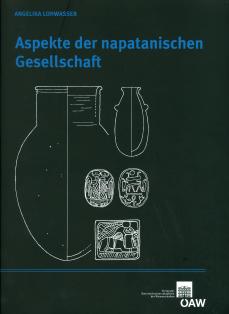The Kushite cemetery of Sanam is the main focus of this publication of Angelika Lohwasser, which is the publication of her habilitation, submitted at the Free University Berlin in 2008 and awarded with the Heinz Maier-Leibnitz-Preis of the German Research Foundation in 2009. The cemetery of Sanam (North-Sudan) was excavated by Francis Ll. Griffith in 1912/13 and published in a preliminary report only in 1923. The documentation of this excavation is housed today in the Griffith-Institute in Oxford and was studied by the author. Moreover, original objects of the excavation, today kept in the Egyptian Museum Berlin, Rijksmuseum van Oudheden, Leiden, and Musées Royaux d’Art et d’Histoire, Brussels, were included into the study. Several of these objects are published for the first time.
The first part focuses on the archaeological material of the cemetery of Sanam (c. 800-600 BC). Since no comprehensive investigation of funerary material of the Napatan period exists until now, this study should act as a reference of the funerary culture of that time. Tombs, burials as well as categories of objects with typologies and systematic analysis present a basis for comparisons with other cemeteries of that time. In the second part the material is investigated according to different methods, focusing on various views. These aspects – chronology, regionality, hierarchy, culture and individuality – complement and supplement each other to produce a comprehensive picture of the cemetery. This interpretation can be read as a cross-section of the funerary society. Based on the proximity to the royal cemetery of Nuri and the workshops found in the city of Sanam, one can assume that the cemetery of Sanam was used by the inhabitants of the city who were responsible for the administration and endowment of the pyramids of Nuri, and belonged to the middle-class. Social differences within this middle-class can be specified by the quantity and quality of the grave goods as well as by the elaboration of the tomb itself. The ethnic affiliation of the people cannot be determined. The earlier excavators tried to distinguish between Nubian and Egyptian burials.
But the study of Angelika Lohwasser shows that in the case of Sanam this is not possible. One has to speak of a Napatan funerary culture, which can be characterized by three elements: 1) traditional, indigen Nubian 2) of Egyptian origin, already imported in the New Kingdom 3) contemporary Egyptian elements. Finally, the author tries to present the funerary community in all its complexity. Apart from the structural picture, the discussion of specific burials provides the picture of the burial practices in Sanam. Last but not least, a narrative of the burial, as it is presented in the material culture of Sanam, is explained.
Literature: Lohwasser, Angelika, Aspekte der napatanischen Gesellschaft. Archäologisches Inventar und funeräre Praxis im Friedhof von Sanam – Perspektiven einer kulturhistorischen Interpretation (Contributions to the Archaeology of Egypt, Nubia and the Levant, vol. 1), Vienna: Austrian Academy of Sciences Press 2012.


